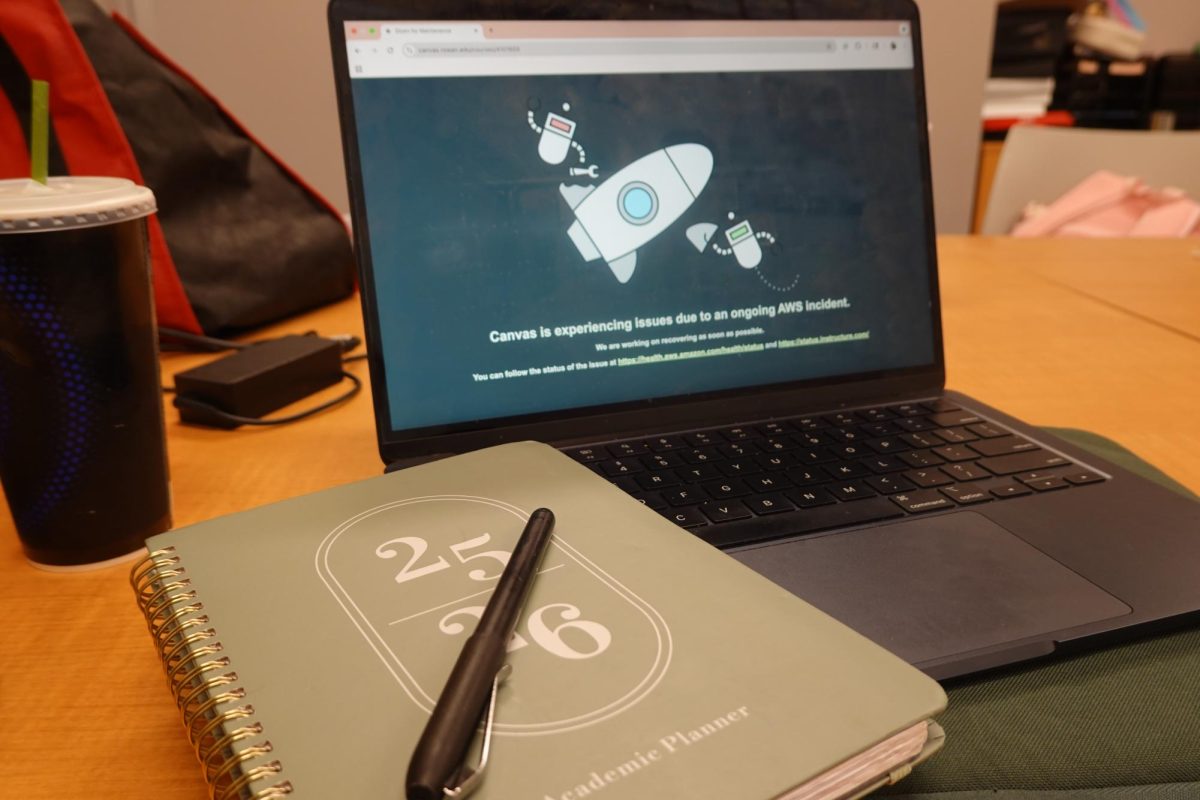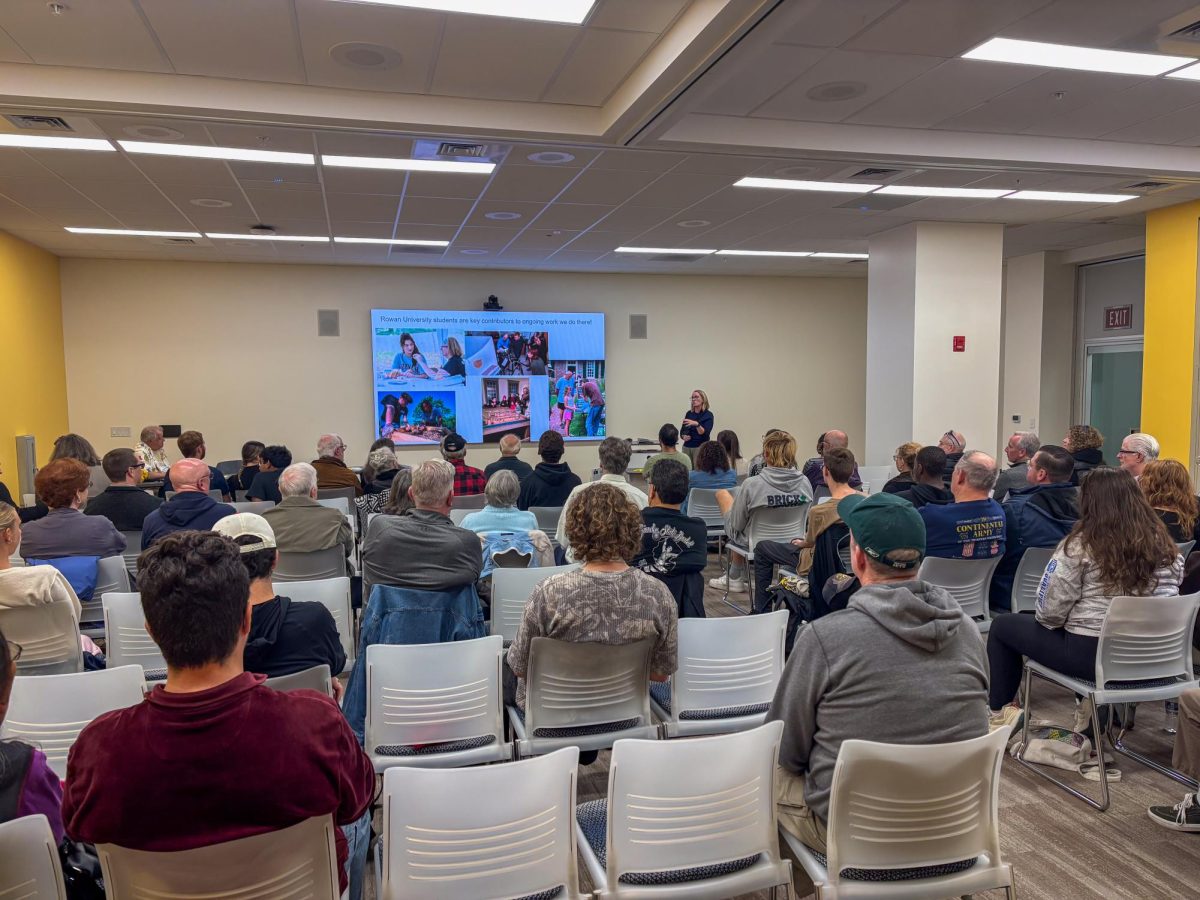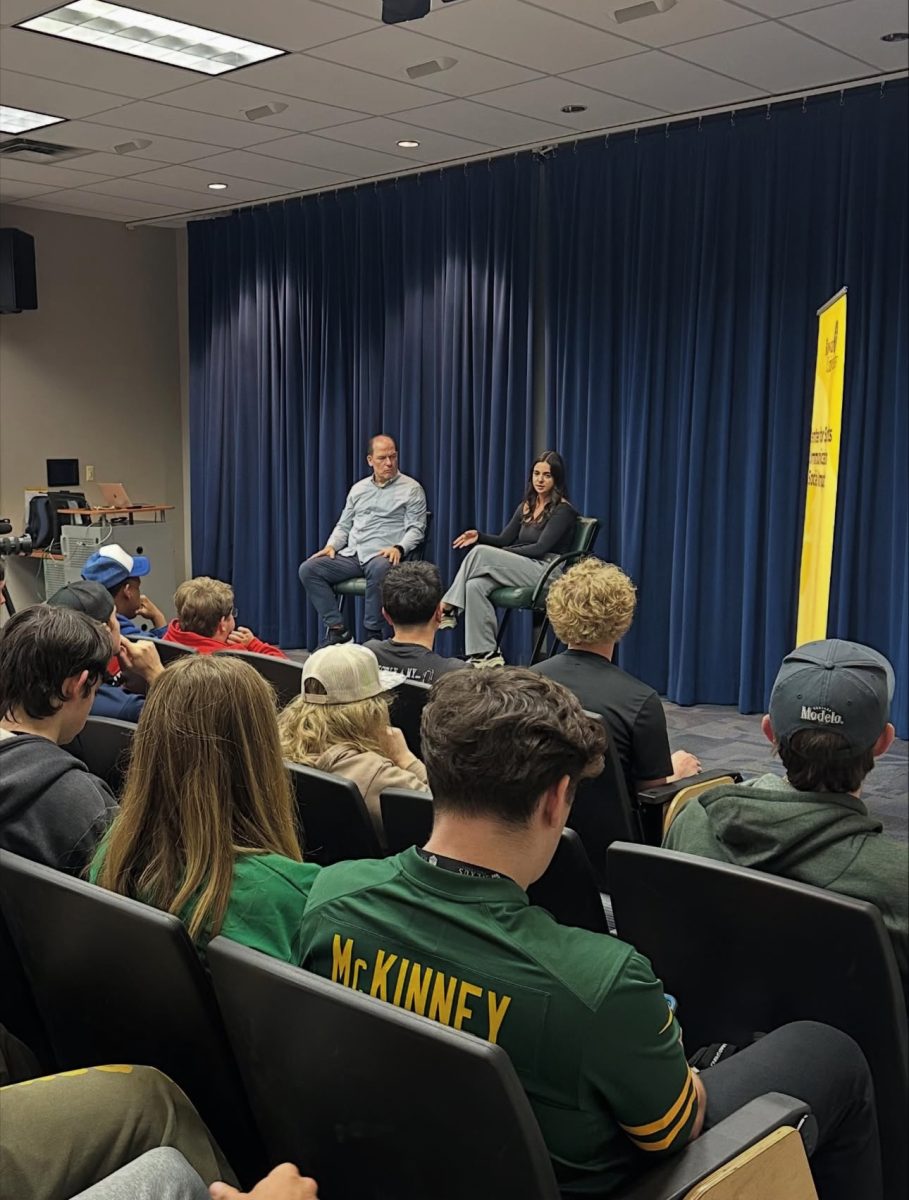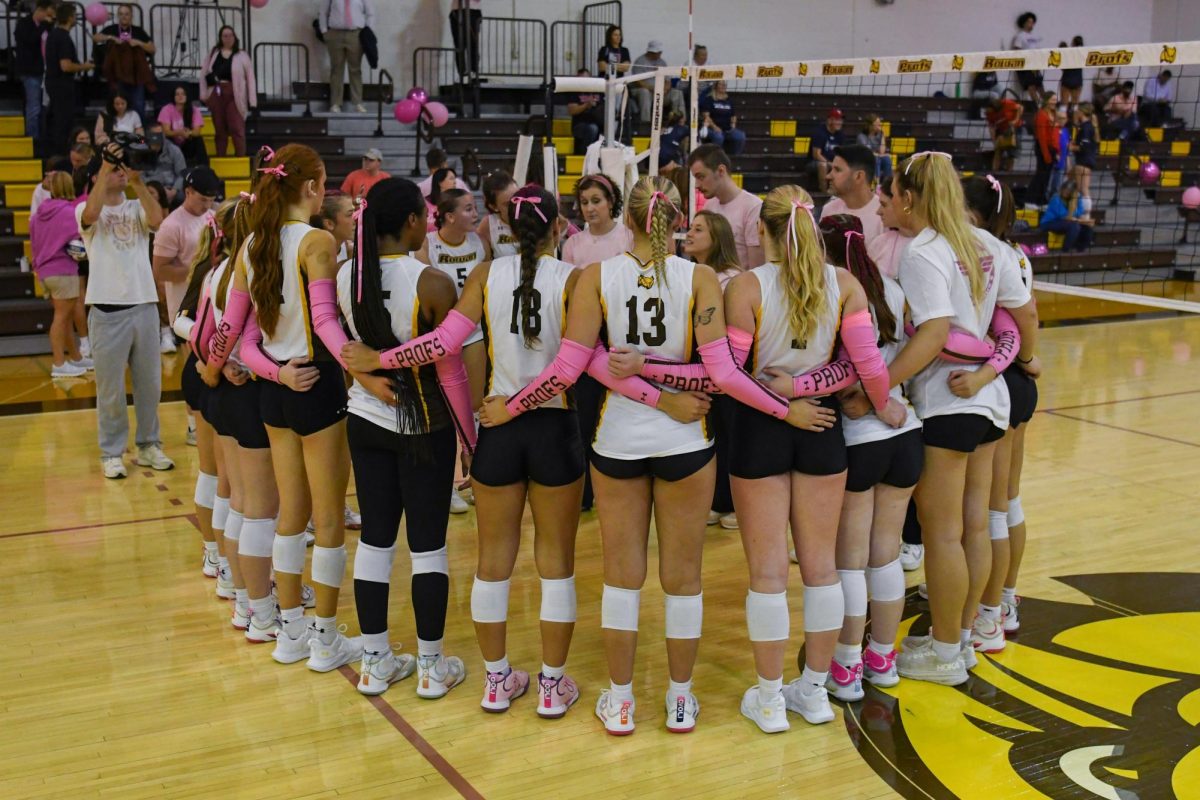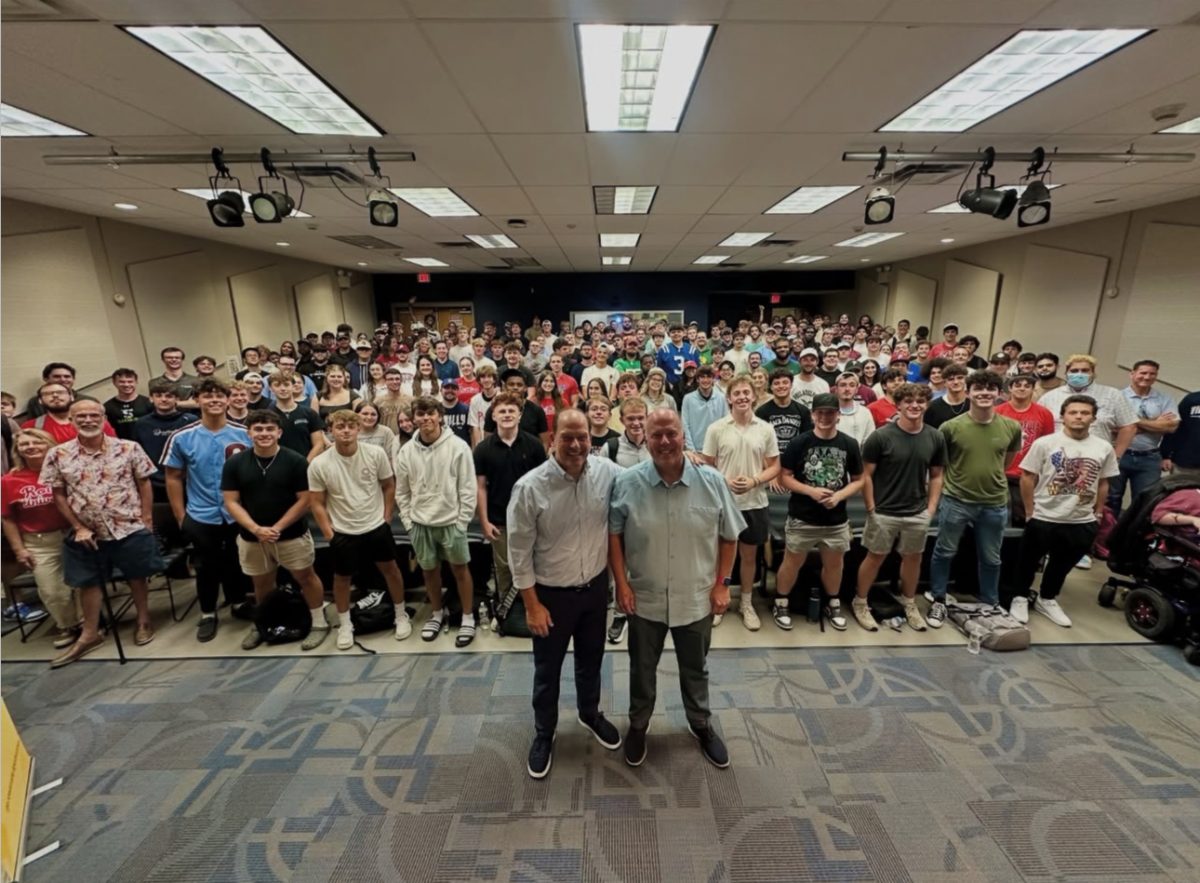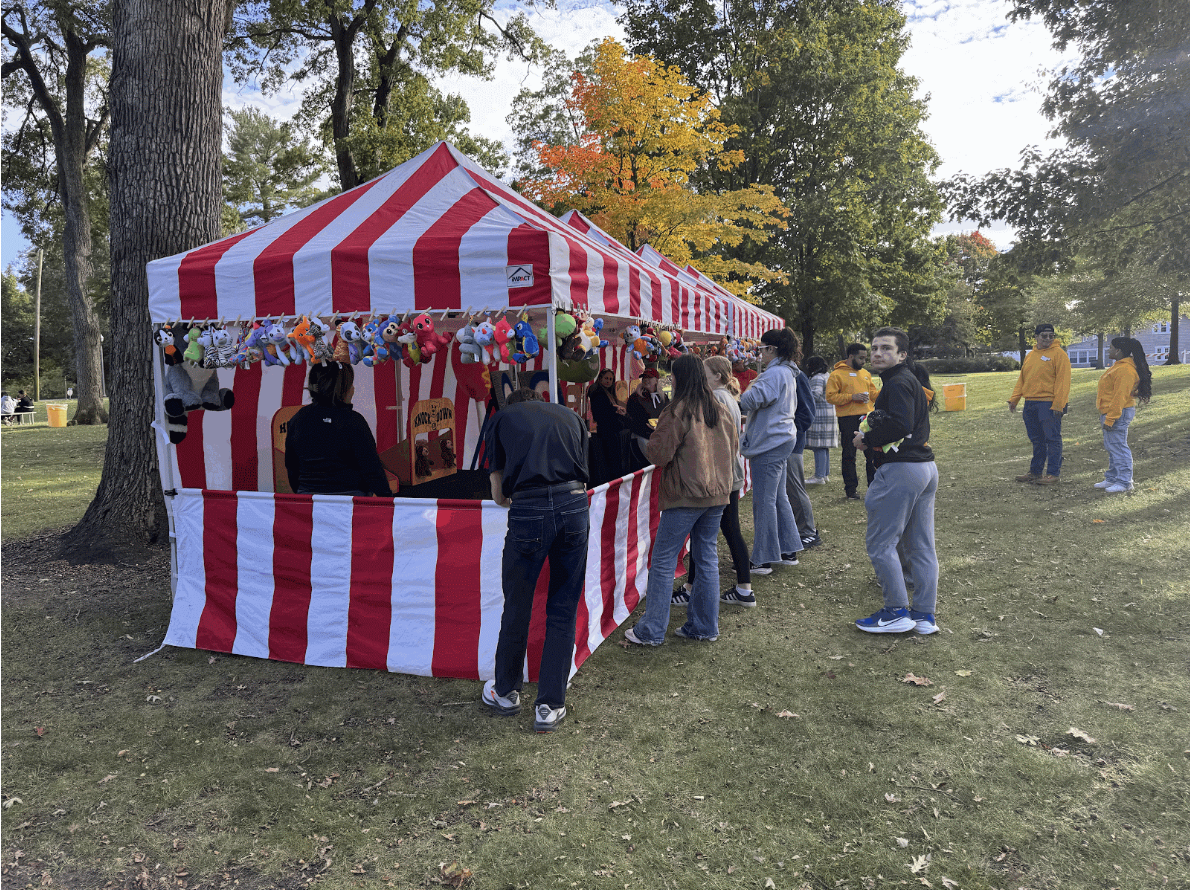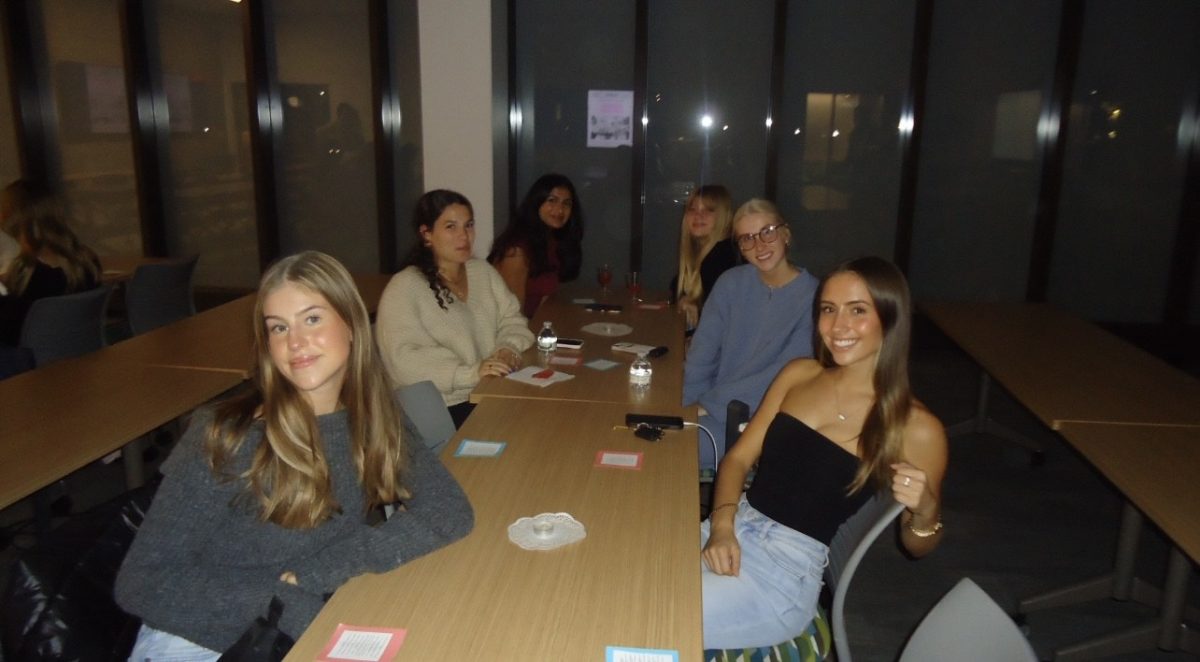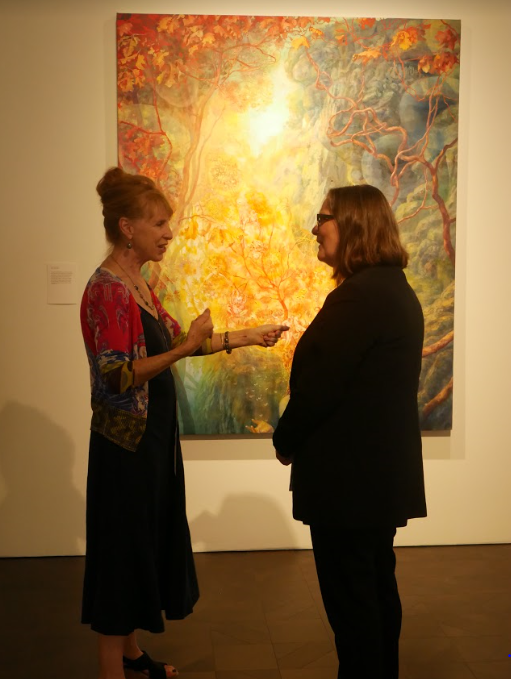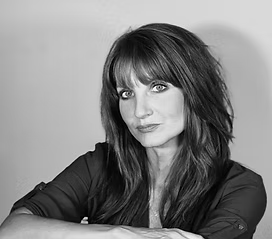Vibrant colors circle the walls of the Rowan University Art Gallery on High St. Shrouded in rich blues and reds, unclothed women stand with vibrantly colored scrolls. Each scroll tells a different story, of sex and creation. On each backside, they show the uglier truths to reality.
“Mending a Reflection” is a series of Julie Heffernan’s self-portraits, in both literal and figurative ways. It’s literal in that she bases the central subjects of each of the 10 oil paintings off of herself. It’s figurative in that she views every painting she does as a self-portrait, regardless of subject. To Heffernan, to paint the contents of her mind at all is to reflect a truer version of herself than physical form alone could convey.

On Sept. 12, Heffernan hosted an Artist Talk open to students and the public. While there, she stressed the importance of minimizing the impact of “negative rendering” to creating art.
“Negative rendering are all the visuals that you see out there that are actually bad for you. Meaning, if visuals are not giving you something, they’re actually taking something from you: they’re taking your attention, they’re filling you up with cliches.”
Almost all of her work is informed by modern politics and social movements.
“This body of work [‘Mending a Reflection’] came after a big body of work called ‘When the Water Rises’ that was about what we’re going to do with climate change as temperatures rise and storms grow greater,” Heffernan explained. “With this new body of work, I wanted to come back to a more intimate world.”
The first painting in “Mending a Reflection,” titled “Self-Portrait with Daughters,” features a single central figure holding a long scroll that was originally blank. According to Heffernan, she waited for the painting to tell her what to include as the imagery on the scroll and in the background.

“Self-Portrait as a Wrangler” by Julie Heffernan in the Rowan University Art Gallery. – Editor-in-Chief / Tara Lonsdorf
“I started to think about all of the forces and influences that had been enriching my life over the years,” she said. “All of these great women. This was before the MeToo movement, but the MeToo movement happened in the course of making this work. I decided that I wanted to be surrounded by great women, great paintings that have fed me and start telling a story about this visual narrative that the thought bubbles made up.”
Represented in Heffernan’s works include images of women who famously spoke out against sexual assault, such as Anita Hill and Alyssa Milano; other paintings feature Joan of Arc, Margaret Atwood and Malala Yousafzai.
“I got to surround myself with women who are changing the world, or who changed the world,” she said. “I wanted to create a reality where all of these women could be together in terms of these portraits.”
This visual narrative on the “Daughters” scroll turned out to be an “origin story;” it starts at the top of the scroll and works its way down.
On one side of the scroll: a creation myth. On the flip side: “A destructive world that mirrors what is happening right now in our own world, where we’re kind of destroying it,” she said. “And we’re right on the precipice of being able to maybe rally and save it and all you people out there, you’re the next generation, let’s save it.”
For the other paintings in the collection, Heffernan leaned upon the power of imagery to tell her narrative. The East Bay in California, where Heffernan grew up, is full of strip malls and billboards. Though she describes the place as “really ugly,” it was a recent visit which inspired her fight against negative rendering.
“I had this terrible dream the last day I was there,” she said. “Where I had to proestelytize against negative rendering. We can talk dreams later – if there’s anyone here who has a dream, I’d love to hear.”
Some of what inspires Heffernan in her fight against negative rendering is art history and historical paintings. Used in much of her iconography, these paintings remind her that the purpose of a painting is to be looked at forever.
“So what is worth being looked at forever?” she asks. “Some of the great paintings in our great museums are really worth looking at forever, and I have derived incredible insights from them. I believe that looking at powerful things makes you wise, makes you smarter, makes you a better person. But there’s also a lot of really crappy paintings that lie to you in the service of propaganda. There’s all those paintings of Napoleon, trying to make him look like a great hero, when really he was just a puny bully.”
According to Gallery Curator Mary Salvante, the event was meant to welcome students back to campus by exposing them to the arts.
“[Heffernan] has been exhibiting excessively and globally, including in the cities of Berlin, Tokyo and Paris,” Salvante said in her opening address to the audience. “Her resume is 22 pages long, so I’m going to have to just focus on some highlights.”
Some of these highlights include exhibitions in the PPOW Gallery in New York City, as well as in the Catherine Clark Gallery in California. She’s also been the recipient of several awards, including grants from the National Endowment of the Arts and a fellowship from the Fulbright Foundation. Write-ups of her work have been featured in the New York Times, The New Yorker and Huffington Post. Currently, Heffernan is a professor at Montclair College.
For questions/comments about this story, email [email protected] or tweet @TheWhitOnline.




